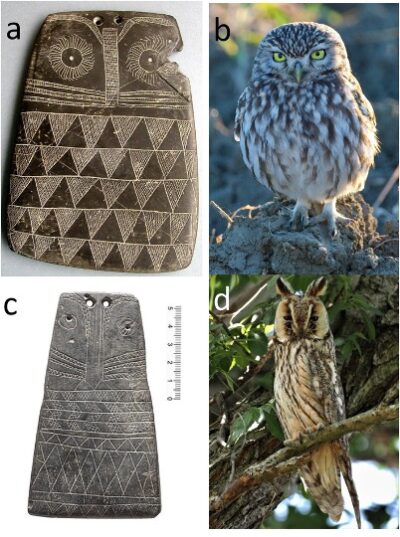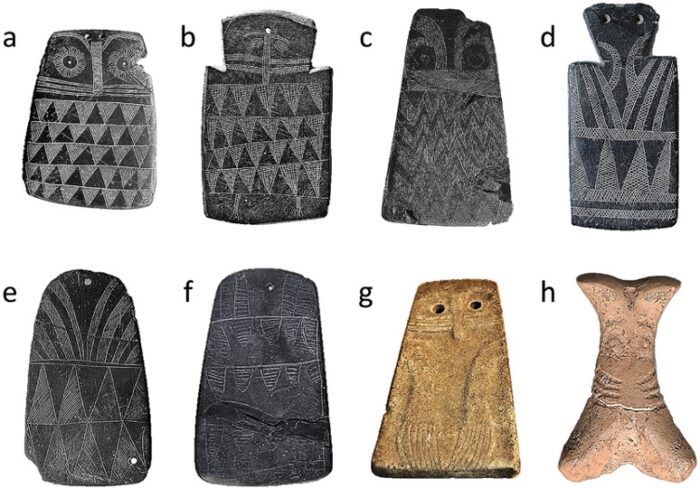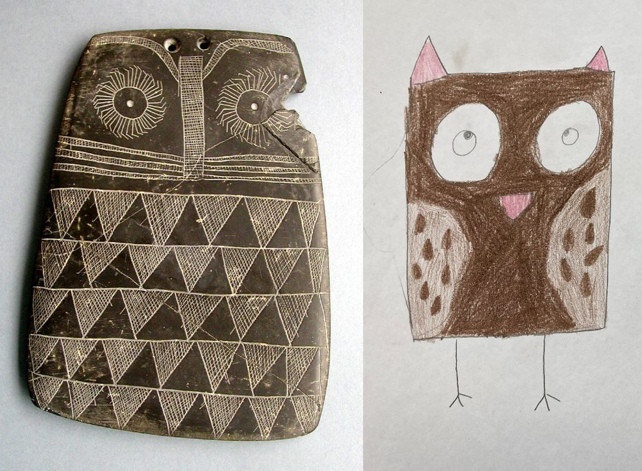For over a century, archeologists working in the Iberian Peninsula (modern Spain and Portugal) have been discovering ancient stone carvings. Experts guessed that the thin slate slab carvings, which number in the thousands, were used in rituals by the Copper Age societies that lived in the area between 5,500 and 4,750 years ago.
But now new research is suggesting that these pieces of ancient artwork had a slightly different origin.
They now believe that they are examples of children's art. And even cooler? The slabs all appear to be images of owls!
So hold on. Kids artwork? From 5,000 years ago? And it was in the image of owls? Did archeologists stumble across the first subscribers of OWL Magazine? (And we thought our magazine was only 46 years old!)
But all kidding aside, we absolutely love this and certainly hope that the Spanish researchers behind this theory are correct. How did they arrive at this conclusion?
Could children have done it?

The similarities between the art and the little owl (b) and the long-eared owl (d) are quite noticeable, right? (Negro et al, 2022)
The question in front of the researchers was a relatively simple one. Could children have made these stone etchings? (An etching is when you scrape or carve a design into a solid surface.)
The researchers compared the designs to two things. First, to modern artwork of owls drawn by kids. And second, to species of owls that are native to the area: the little owl and the long-eared owl.
They concluded that the art style—which features many simple repeating patterns—was consistent with something that a young child could do And that they carvings were extremely similar to the local owl species.
They also estimated that the tools that would be needed to make these designs—sharp tools made of flint, quartz, or copper—would've been readily available and useable by children.
In other words, could children have done it? Absolutely!
Did children do it?

Critics of the child artwork theory say that all of these pieces of art are too similar to have been done by kids. Instead, adults were much more likely to carry on this art tradition. (Negro et al, 2022)
Of course, proving that children were the artists behind these stone carvings is a whole other matter. Experts have been debating the origins and purpose of these etchings for many decades.
Critics argue that this new theory, while adorable, is not really that scientific. It ignores how similar the owl carvings are from region to region, and across hundreds of years. They argue that adults tend to be better at absorbing traditions and reproducing such similar artwork over and over.
It's not even for sure to say that these are, in fact, images of owls. It could an image of a deity, or god.
But one thing is for certain: it is possible that many of these etchings are the works of children. We think it's really cool that the debate over the true history of these pieces of art is continuing.
And now that you've seen them for yourself, there's no reason why you can't make your own owl etching as a tribute. Long may this owl-some tradition live on!
 Who's there? A comparison between a 5,000 year-old carving and a modern drawing of an owl by a kid. (CSIC, Juan Jose Negro)
Who's there? A comparison between a 5,000 year-old carving and a modern drawing of an owl by a kid. (CSIC, Juan Jose Negro)









